Are you tired of constantly having damaged hair because of tying it up? Damaged hair can be frustrating, not to mention unhealthy. Here are some tips on how to tie up hair without damaging.
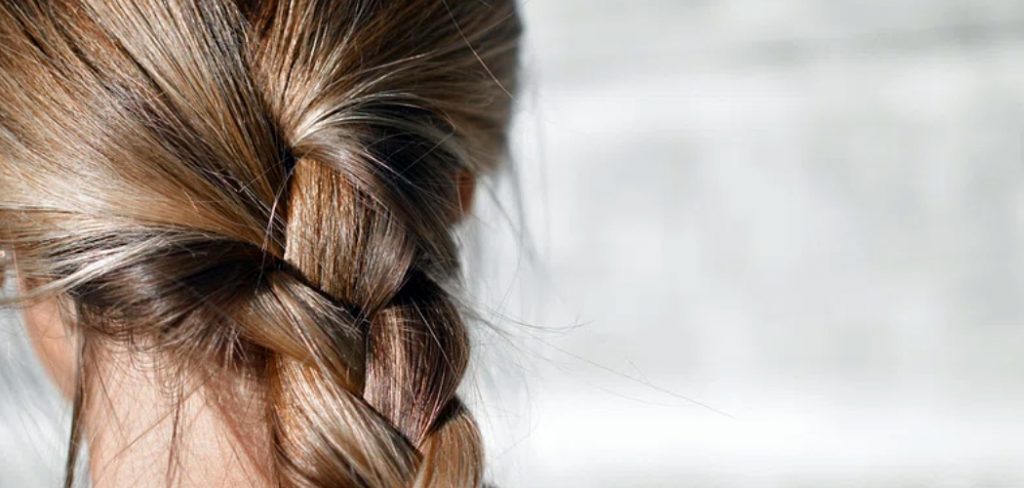
Tying up your hair is a practical and stylish way to keep it out of your face, but it’s important to do so carefully to avoid unnecessary damage. Poor techniques and harsh accessories can lead to breakage, split ends, and even hair loss. By using the proper methods and tools, you can protect your hair’s health while still achieving a secure and fashionable style.
This guide will provide tips and techniques to help tie up your hair safely and effectively, keeping it strong and vibrant.
What Will You Need?
To start, you’ll need to ensure you have the right supplies. Here are some items that will come in handy when tying up your hair without causing damage:
- Hair ties or scrunchies made of soft material
- Bobby pins with smooth edges
- Satin or silk hair wraps or scarves
- Wide-tooth comb for detangling
Having the proper tools and accessories can make a significant difference in protecting your hair from damage.
10 Easy Steps on How to Tie Up Hair Without Damaging
Step 1: Start with Clean, Dry Hair
Before tying up your hair, ensure it is clean and scorched. Wet hair is more vulnerable to breakage, so it’s essential to avoid styling it until it has thoroughly dried. Use a gentle shampoo and conditioner to keep your hair nourished and hydrated, and detangle it carefully with a wide-tooth comb to minimize pulling or damage.
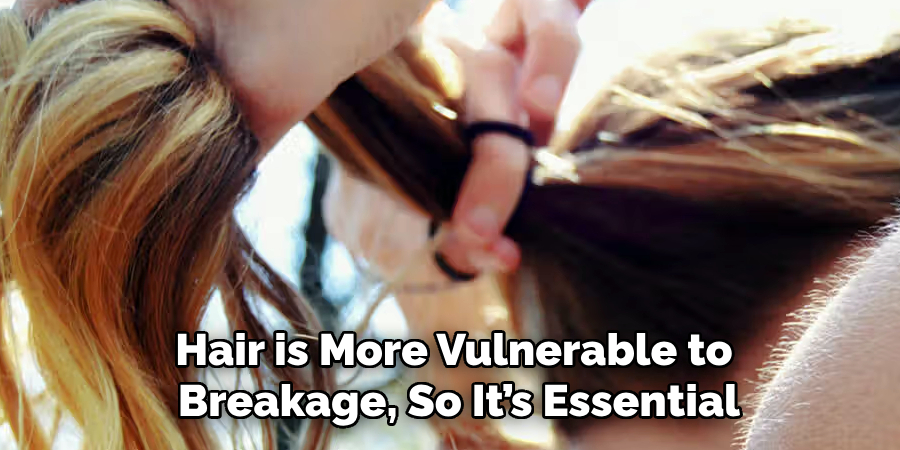
Step 2: Choose the Right Hair Ties
Opt for hair ties or scrunchies made from soft materials like silk or satin to reduce friction and prevent hair breakage. Avoid using elastic or rubber bands, as they can tug on your hair and cause damage. Soft hair ties will secure your hairstyle while being gentle on your strands. Don’t tie your hair too tightly, as this can cause tension and breakage over time.
Step 3: Avoid Tying Hair at the Same Spot
Repeatedly tying your hair in the same spot can weaken and damage the strands, causing them to break easily. Instead, try varying where you tie your ponytail or bun on different days. This will help distribute any tension or pressure evenly on your hair.
Step 4: Use Bobby Pins Strategically
Bobby pins are great for keeping stray hairs in place, but be careful not to use too many or insert them too tightly against your scalp. This could put unnecessary stress on your hair and cause damage. Try using bobby pins with smooth edges to avoid pulling on your strands.
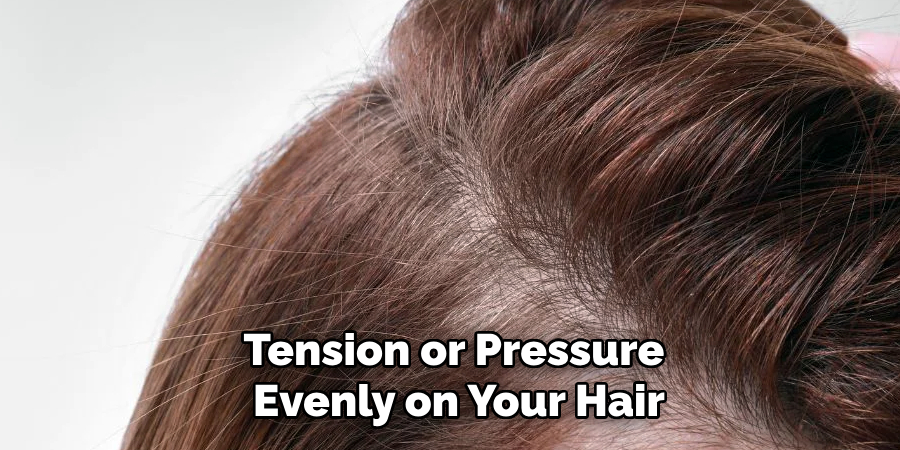
Step 3: Loosely Secure Your Hair
When tying up your hair, avoid pulling it too tightly, as this can put unnecessary strain on your scalp and hair follicles, leading to breakage or even hair loss over time. Instead, gently gather your hair and secure it with your chosen hair tie or scrunchie, leaving a bit of slack to reduce tension. If you’re creating a ponytail, position it comfortably, and it doesn’t pull at your scalp. For buns or other updos, ensure the style is firm enough to stay in place but not overly tight. Looser styles protect your hair and promote better blood flow to your scalp, contributing to overall hair health.
Step 4: Protect Your Hair While Sleeping
Your nighttime routine plays a significant role in maintaining hair health. To minimize friction and prevent damage, consider wrapping your hair in a silk or satin scarf or a silk or satin pillowcase. These materials are gentle on your hair, helping retain moisture and reducing the risk of tangles or breakage. Additionally, loosely braiding your hair before bed can keep it from becoming knotted overnight, especially for longer hair. These precautions ensure your hair stays protected as you rest, setting the foundation for healthier hair.
Step 5: Be Mindful of Heat Styling
Excessive use of heat styling tools can weaken your hair and lead to breakage over time. Always apply a heat protectant to create a barrier and minimize damage when using tools like flat irons, curling wands, or blow dryers. Opt for lower heat settings whenever possible, and give your hair regular breaks from styling to recover. Incorporating heat-free styling techniques, such as braiding or using rollers, can also help maintain the strength and vitality of your hair.
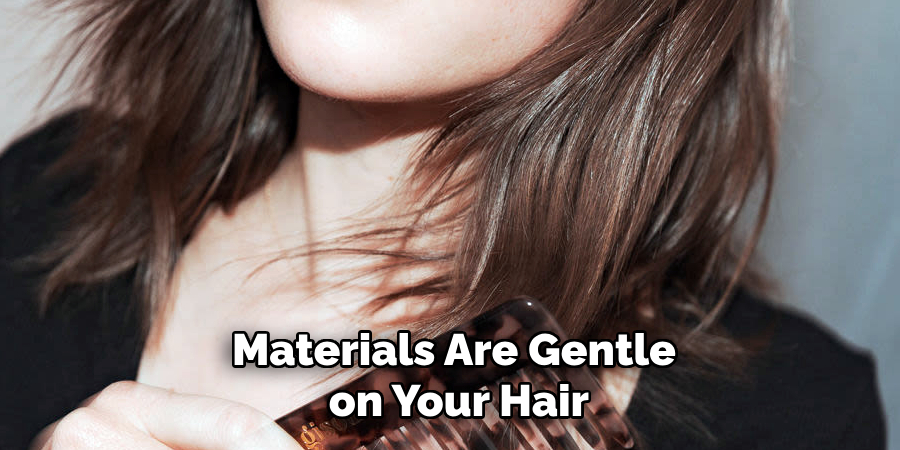
Step 6: Maintain a Healthy Diet
What you eat plays a crucial role in the health of your hair. A balanced diet rich in vitamins and nutrients, such as biotin, vitamin E, and omega-3 fatty acids, can promote stronger, shinier hair. Foods like leafy greens, nuts, fish, eggs, and avocados are especially beneficial for nourishing your hair from the inside out. Staying hydrated is equally important, as moisture starts from within and contributes to overall hair health. A well-rounded diet supports growth and prevents brittleness, ensuring your hair remains vibrant and resilient.
Step 7: Protect Your Hair From Environmental Damage
Environmental factors like excessive sun exposure, pollution, and harsh weather conditions can weaken and damage your hair over time. To protect your hair, consider wearing a hat or scarf when outdoors for extended periods, especially in intense sunlight. Use hair products with UV protection to shield your strands from harmful rays. Additionally, rinse your hair after swimming in chlorinated or salty water to remove residual chemicals or minerals that can cause dryness and breakage. Taking these precautions can help preserve the health and integrity of your hair, even in challenging environmental conditions.
Step 8: Avoid Over styling and Heat Damage
Excessive styling and overuse of heat tools can damage your hair significantly, causing split ends, dryness, and breakage. Limit your use of curling irons, flat irons, and blow dryers, and always use a heat protectant spray before applying heat to your hair. Opt for hairstyles that don’t strain or pull excessively at your roots, which can lead to thinning over time. Allow your hair to air-dry whenever possible, giving it a break from constant heat exposure. By reducing heat and over-styling, you can maintain stronger, healthier hair.
Step 9: Maintain Your Hair’s Natural Oils
Overwashing your hair can strip it of its natural oils, leading to dryness and breakage. On days when you don’t need to wash your hair, consider using a dry shampoo to absorb excess oil and maintain volume without causing damage. Also, choose gentle shampoos and conditioners that don’t contain harsh chemicals or sulfates, as these can also strip your hair of natural oils. Keeping your hair’s natural oils balanced helps protect it from damage and keeps it looking shiny and healthy.
Step 10: Try Natural Remedies
In addition to a healthy diet, natural remedies can also promote hair health. For example, massaging your scalp with coconut oil or argan oil can improve scalp circulation and stimulate hair growth. Aloe vera gel has soothing properties that can help reduce inflammation and nourish the scalp, promoting healthier hair growth. Rosemary oil has improved hair thickness and strength, making it a beneficial addition to your hair care routine. By incorporating natural remedies into your hair care regimen, you can support healthy hair growth and enhance the overall health of your scalp.
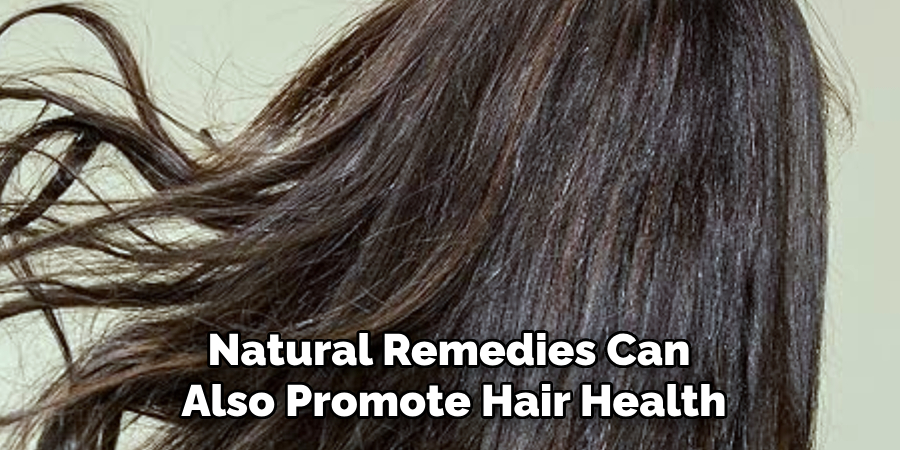
With these steps, you can establish a healthy hair care routine promoting strong, shiny, resilient strands.
5 Things You Should Avoid
- Using Tight Hair Ties: Avoid using hair ties that are too tight, as they can create tension on the scalp and hair follicles. This can lead to breakage and even hair loss over time.
- Tying Hair When Wet: Hair is more fragile and prone to damage when it’s wet. Avoid tying your hair immediately after washing, as this can cause unnecessary stress and lead to breakage.
- Overusing Elastic Bands: Regular elastic bands without fabric coating can pull and snap hair strands, damaging the texture. Opt for hair-friendly alternatives like scrunchies or spiral hair ties.
- Tying Hair in the Same Spot Daily: Tying your hair in the same spot can weaken that specific section of your hair, leading to breakage. Try to change the position of your ponytail or bun to minimize damage.
- Ignoring Hair Protection: Failing to use protective measures, such as applying a serum or using a silk scarf, can make your hair more susceptible to damage while tied up. Always prep your hair with care before styling.
Conclusion
To tie up your hair without causing damage, it’s essential to adopt gentle and mindful practices. Use hair accessories that are soft and protective, such as silk scrunchies or fabric-coated bands, to minimize tension and breakage. Avoid tying your hair too tightly or in the same style repeatedly, as this can degrade the health of your hair over time. Always ensure your hair is dry before tying it up and consider applying a nourishing serum or oil for added protection.
The article on how to tie up hair without damaging it has given you some useful tips to incorporate into your haircare routine.
By incorporating these habits, you can keep your hair healthier and reduce the risk of damage while still enjoying stylish and practical hairstyles.
About the Author
Jane Hubbard is a passionate beauty expert with a wealth of experience in makeup, hair, and overall beauty techniques. After years of working as a hairdresser specialist, she followed her entrepreneurial spirit and started her own consultancy business.
Jane has always been driven by her desire to help others feel confident in their own skin, and she does this by sharing her knowledge, experiences, and practical beauty tips. Through her consultancy, she empowers individuals to embrace their unique beauty, offering tailored guidance that boosts both self-esteem and personal style.
Professional Focus
- Specializes in makeup, hairstyling, and beauty consulting.
- Provides personalized beauty advice, tips, and techniques to help individuals feel confident in their appearance.
- Dedicated to staying up-to-date with the latest industry trends and developments.
- Passionate about creating a comfortable and empowering experience for every client.
Education History
- University of Craft and Design – Bachelor of Fine Arts (BFA) in Woodworking and Furniture Design
- Woodworking Apprenticeships – Extensive hands-on training with skilled craftsmen to refine carpentry and furniture making techniques
- Online Courses & Masterclasses – Continued education in advanced woodworking techniques, design principles, and specialized tools
Expertise:
- Makeup artistry, hairstyling, and beauty consulting.
- Personalized beauty techniques to enhance confidence and self-expression.
- Educating clients on how to maintain their beauty routines at home.
